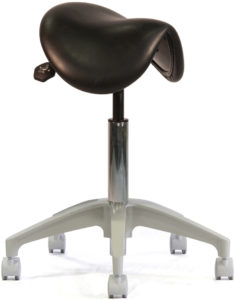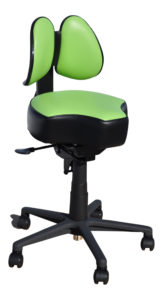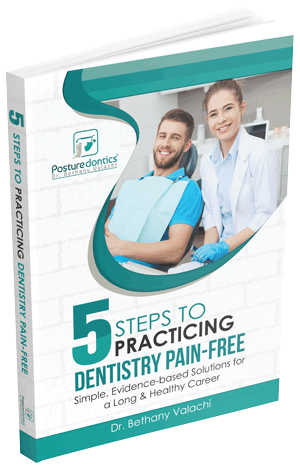
-Dr. Bethany Valachi-
Those who know me well may think I advocate a saddle stool because I am an equestrian! However the beneficial biomechanics behind a saddle stool in the operatory cannot be overlooked.
Saddle-style stools are becoming increasingly popular in dentistry—and for good reason. The benefits of this positioning are numerous, and research supports the positive impact on the musculoskeletal system. For those unfamiliar with saddle-style stools, they may seem unconventional, if not radical, compared to traditional flat operator stools. However, with the prevalence of back pain in dentistry unwavering over the past 50 years (around 65%), the recognition for new, alternative methods for sitting and preventing back pain are gaining increased recognition.
In many people, a saddle style stool promotes a more neutral pelvic position than a traditional dental stool, which supports the spine’s 3 natural curves in a balanced posture. However in people with an altered lumbar curvature, a saddle can cause back pain. The thighs slope steeply (45°) downward, so the seated position is halfway between sitting and standing (think ‘supported standing’). The resultant benefits to the musculoskeletal system and from an ergonomic standpoint when compared with conventional style seating are numerous.
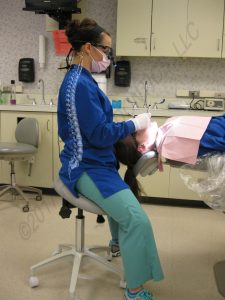 NOTE: Saddle stools can cause low back pain for operators with a specific shape of lordosis OR if the stool is improperly adjusted!
NOTE: Saddle stools can cause low back pain for operators with a specific shape of lordosis OR if the stool is improperly adjusted!- The stool places you in a ‘tripod’ position with the hips slightly flexed and abducted (spread apart), which is the most stabilize position for the hip joint.
- Dentists with short torsos who find they have to lift their arms to the sides when working, can easily lower the patient when seated on a saddle stool, allowing more relaxed neck and shoulder musculature.
- It is easier to maintain neutral spinal posture, since you are halfway between standing & sitting.
- It is easier to gain close proximity to the patient when the thighs are steeply sloping downward, which minimizes excessive forward reaching.
- Moving the stool is easier, since it utilizes the larger thigh muscles instead of the calf muscles.
- Its low profile makes the saddle stool ideal to access the 12:00 position in small, confined operatories.
Fig. 1 Left: a true saddle stool. Right: a hybrid saddle stool
Selection of saddle stools. There are 2 styles of saddle stools on the market that allow this optimal ergonomic positioning. A true saddle stool (left) and a saddle-style stool (right). One of these stools will be more appropriate for you than the other depending upon your lumbar curvature (hyperlordotic, hypolordotic or neutral) gender, lumbar disc health and height.
Adjustment of saddle stools. The adjustment of a saddle stool depends on your lordosis. Is it neutral, excessively curved, or flat?
Learn how to select the right stool for YOU, and how to properly adjust it!
CLICK HERE
Copyright 2018 Posturedontics, LLC

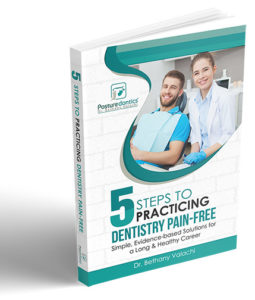 How can you protect your back, neck, shoulders, and hands for a long and healthy career?
How can you protect your back, neck, shoulders, and hands for a long and healthy career?
